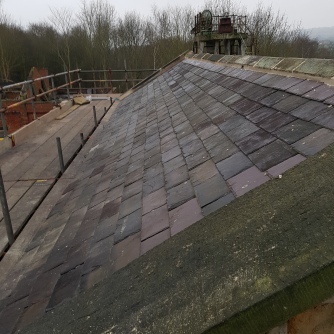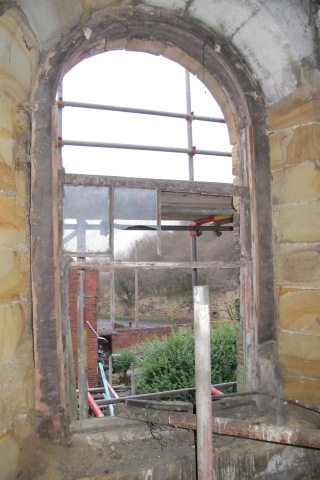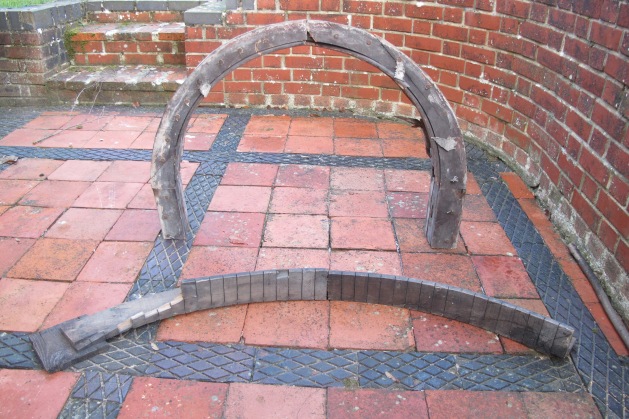
Fuelling the Friends – A rich seam of enthusiasm
As the Friends and volunteers returned to site at the end of January, they discussed their plans, passions and other pass times. With Friends Director and Site Manager Glen on hand, Friends Chair Steve, Director Ian and Friends’ Director of Volunteering Christine, this weekend was a great time to celebrate the many volunteer voices at Hemingfield; sharing personal passions, insights and enthusiasms. Volunteers John, Iain, Glenda, Keith, Chris and Phil were on hand during the day to lend a hand, and share the research and discoveries they had made.
Shining bright
Admiring the continuing work on the 1840s winding engine house roof, the group continued one of the the working party tasks, ongoing brick recovery along the Wath Road boundary wall. They also took time out to discuss the whole programme of work for the year ahead. There’s plenty to be getting on with and some very exciting plans!




Talking to everyone, it’s clear, the Friends are fortunate to have such a passionate crew. Over the year ahead, we hope to hear many more of the voices from the pit. With this in mind we have a couple of fascinating pieces on the Friends’ responses to Hemingfield Colliery; the life and activity, buildings and stories of the site.
The Recycling revolution is nothing new – nature has been at it for years!
- A quick look at the Turkey Tail Fungus (Trametes Versicolor)

Glen Sheppard, FoHC
This is a very common bracket fungus which is found across the world, from Scandinavia to North America, and even Hemingfield colliery. Although it grows all year round it is most visible in the winter months when it expands its Turkey tail-shaped fruiting body to release its reproductive spores.
This fungus was first described formally by Carl Linnaeus in the 18th century who named it “Boletus Versicolor”. It was renamed by the American mycologist Curtis Gates Lloyd in 1920 to the name by which it known today :“Trametes Versicolor” given to more accurately reflect the Genus (family) of fungus of which it is a member. Trametes – taken from the Latin “Tram” meaning thin, refers to the thin section of the fan-shaped fruiting body, and Versicolor which means several colours. This description can sometimes be misleading as the colours of the fruiting bodies can vary widely from examples with just shades of brown through to dark reds and purples.

The Turkey Tail is part of a family which contains the worlds largest living organism – a network of fungal mycelia in Oregon USA which is over 1700 football fields in size and has been dated as being over 2200 years old!

It is one of nature’s great recyclers; as a Saprophyte it feeds on decaying wood by spreading out its Mycelia – a white thread-like network which is the actual fungus. It is so effective in its contribution to the decay of organic matter, in particular wood, it is the species most commonly used to test the effectiveness of wood preservative agents by the major chemical companies.
Along with its recycling it is also helping in the preservation of life due a chemical it contains called Polysaccharide – K. This is extracted and used alongside chemotherapy in the treatment of cancer. So in its own unique way this arbiter of decay is playing it part in the development of the pits future by clearing away the debris left by the years of abandonment.
Pineing for the Fjords

Steve Grudgings, FoHC
One of the challenges of conserving a site like Hemingfield is how to retain the historic character and feel of the place whilst making it clean, weather and vandalproof. Much of the old structure needs attention in this respect and the woodwork is one important part of this.
Whilst dealing with old wood won’t be everyone’s cup of tea, my recent grapplings with ageing timbers has given me a strong sense of connection with the men that built the winding engine house.
In the recent re-roofing work some of timbers have needed replacing and rather than burn them some have been sawn up for kindling and I and others took some various lengths home to use on our woodburners. After retrieving them from my shed. It’s a nice surprise to split a soot blackened, owl-fouled piece of scrap to find a pristine deep yellow close-grained interior without knots, very different from what is normally used for such purposes.
I remind myself that this timber would originally have been carefully selected by Earl Fitzwilliam’s carpenters that built the Engine House and would probably have been shipped from the Baltic from Scandinavian sources (Memel Pine was a famous one). Such wood was seasoned at source and it’s sea journey to Hull or Goole and then river and canal to Hemingfield would have enhanced this. I was left wondering where it was sawn to length and who determined what size the timber should be. Because of the relative thinness of the rafters, I believe the roof was covered with slate from the outset rather than the thin local stone that was used in earlier times.

View of the window April 2015
When I’m cleaning windows
One of the many attractive features of the original 1840s vertical winding engine house is the small arched window at the apex of its eastern gable which the resident barn owl family has long used to access the building via its unglazed opening.

Inside out. A lesser seen view.
Installation of bird cage scaffolding (no pun intended) inside the building has enabled access for the first time to this window opening as a basis for its repair and incorporation of a suitable new opening to enable the return of our strygian occupant.

Although the arched window frame was in surprisingly good condition, rot in its lower sections meant it could not be reused – so out it came onto the scrap wood pile. As I have always been drawn to arches and felt it was too good to burn, I sawed off the rotting sections and decided to take the rest home.



The next day I had a spare few minutes to brush the two sections down, clean off the dust and grime, and give them a quick rub down with wire wool followed by a good soaking of raw linseed oil. Getting close up to the frames helped me appreciate (again) the quality of the wood and understand the care and precision with which, what was after all just a simple industrial window, was made. The frame timbers had been carefully cut on the curve and nailed (no screws) and built up in sections to produce something that would take a lot of time and money to replicate in modern form.

This of course begs the question – what to do with it? I don’t yet know but think they should be returned for eventual display as a “found object” or suchlike. It could be argued they are not significant enough to retain, or even bother writing about; and yet, after a close acquaintance with it, I felt a connection across the years with the joiner that built the window frame.
We look forward to sharing more insights and voices from the pit as the year progresses!